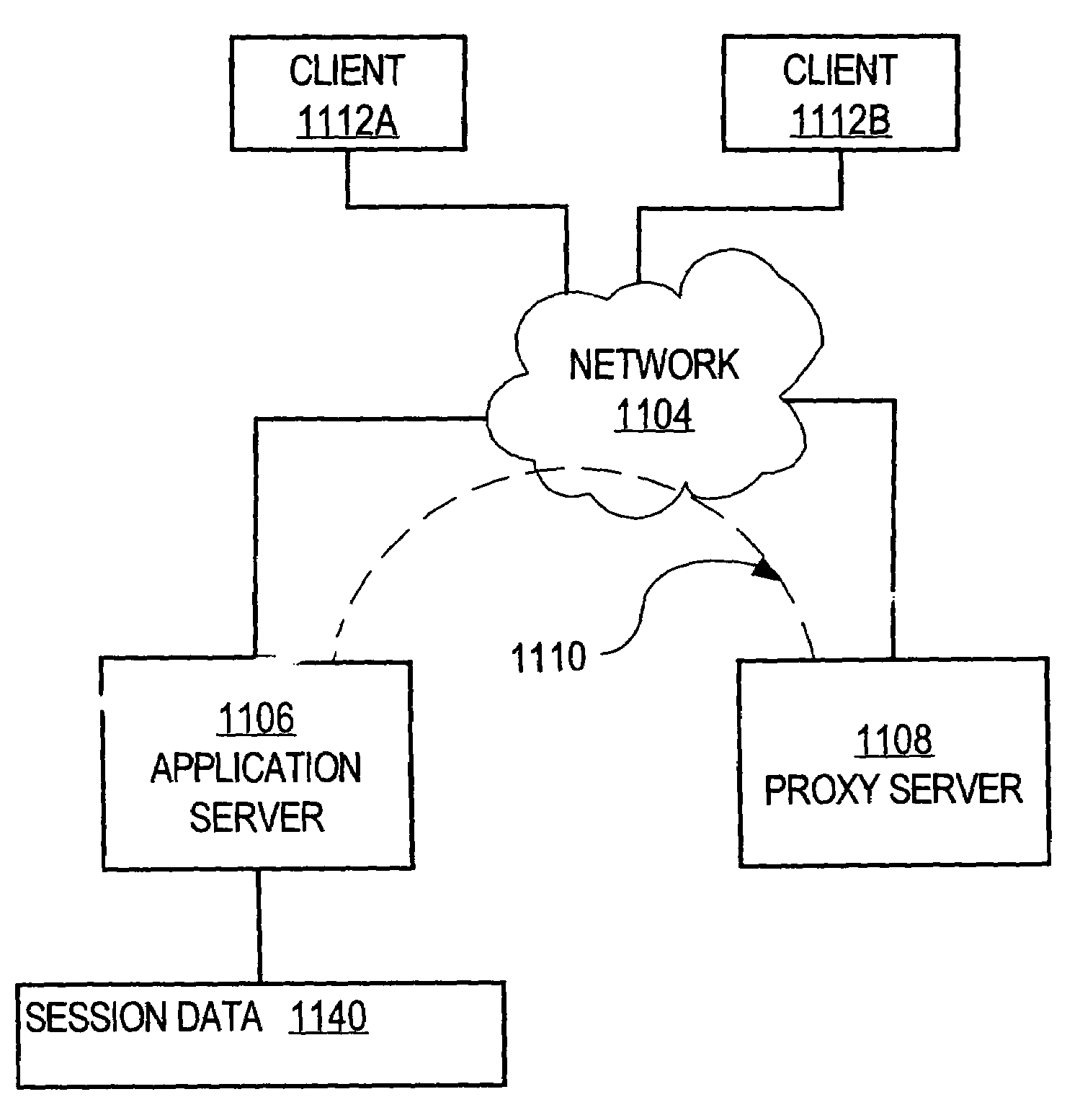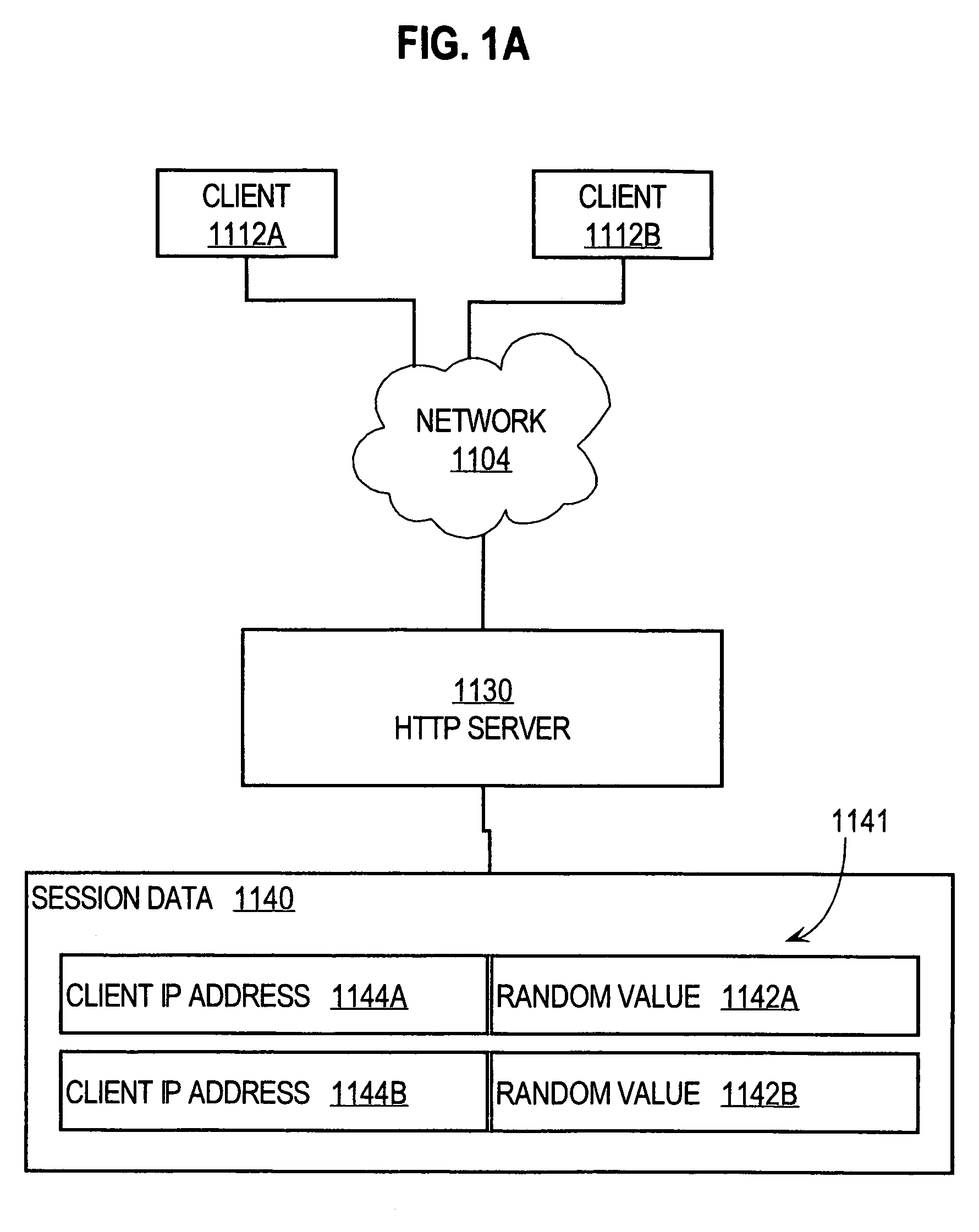Selectively passing network addresses through a server
a network address and server technology, applied in the field of data processing, can solve the problems of security being compromised, and important identifying information not being available to the receiving server, and achieve the effect of preventing the interception of client ip addresses
- Summary
- Abstract
- Description
- Claims
- Application Information
AI Technical Summary
Benefits of technology
Problems solved by technology
Method used
Image
Examples
Embodiment Construction
[0034]A method and apparatus for selectively passing network addresses through a server is described. In the following description, for the purposes of explanation, numerous specific details are set forth in order to provide a thorough understanding of the present invention. It will be apparent, however, to one skilled in the art that the present invention may be practiced without these specific details. In other instances, well-known structures and devices are shown in block diagram form in order to avoid unnecessarily obscuring the present invention.
[0035]Selectively Passing Network Addresses
[0036]FIG. 3C is a flow diagram of a method of selectively allowing a source network address to pass through a server.
[0037]In block 340, a network address is received from a host that is originating a service request. For example, application server 1106 may receive a Universal Resource Locator (URL) or HTML POST form that includes a service request message, in which one parameter or field va...
PUM
 Login to View More
Login to View More Abstract
Description
Claims
Application Information
 Login to View More
Login to View More - R&D
- Intellectual Property
- Life Sciences
- Materials
- Tech Scout
- Unparalleled Data Quality
- Higher Quality Content
- 60% Fewer Hallucinations
Browse by: Latest US Patents, China's latest patents, Technical Efficacy Thesaurus, Application Domain, Technology Topic, Popular Technical Reports.
© 2025 PatSnap. All rights reserved.Legal|Privacy policy|Modern Slavery Act Transparency Statement|Sitemap|About US| Contact US: help@patsnap.com



